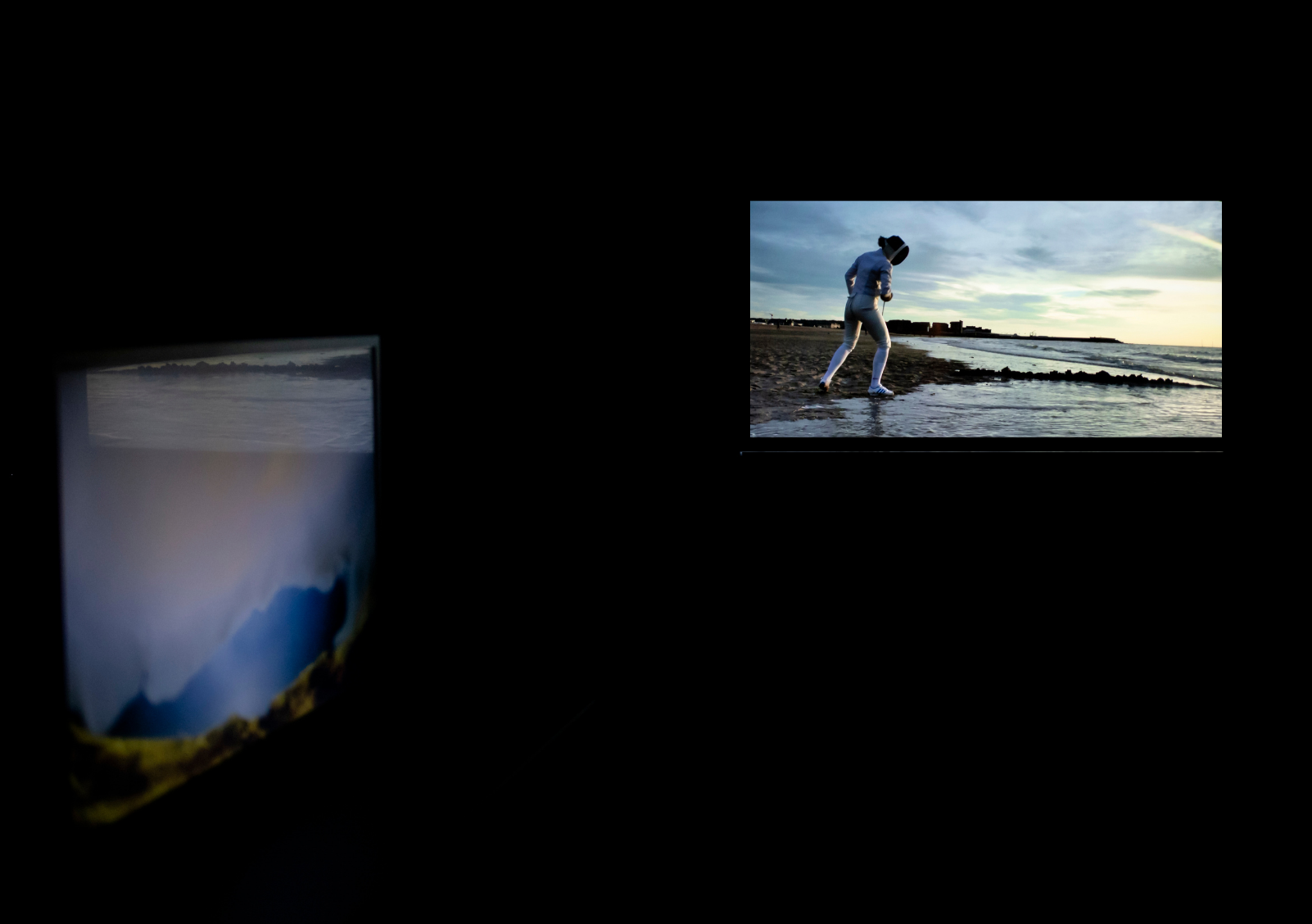
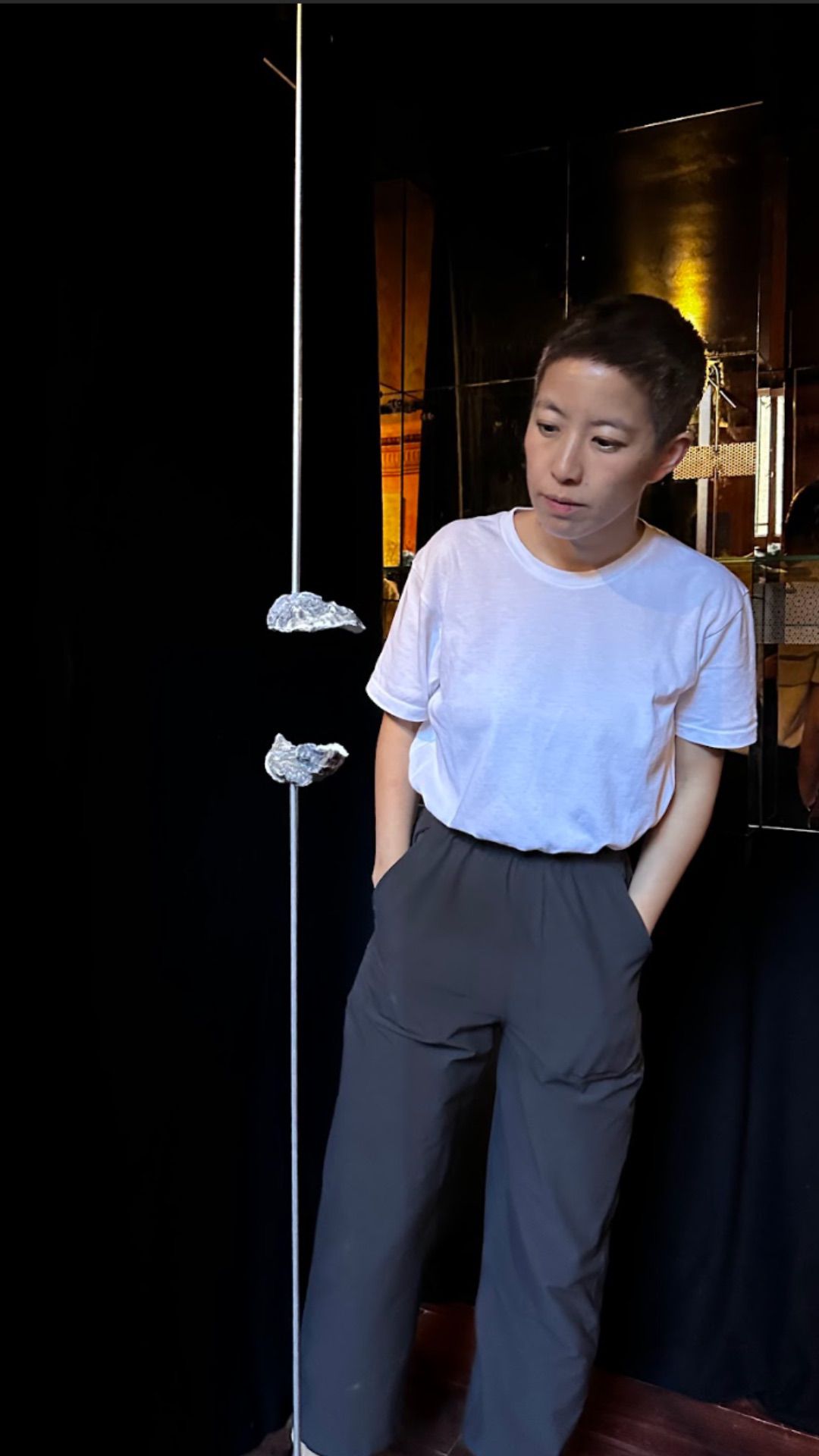
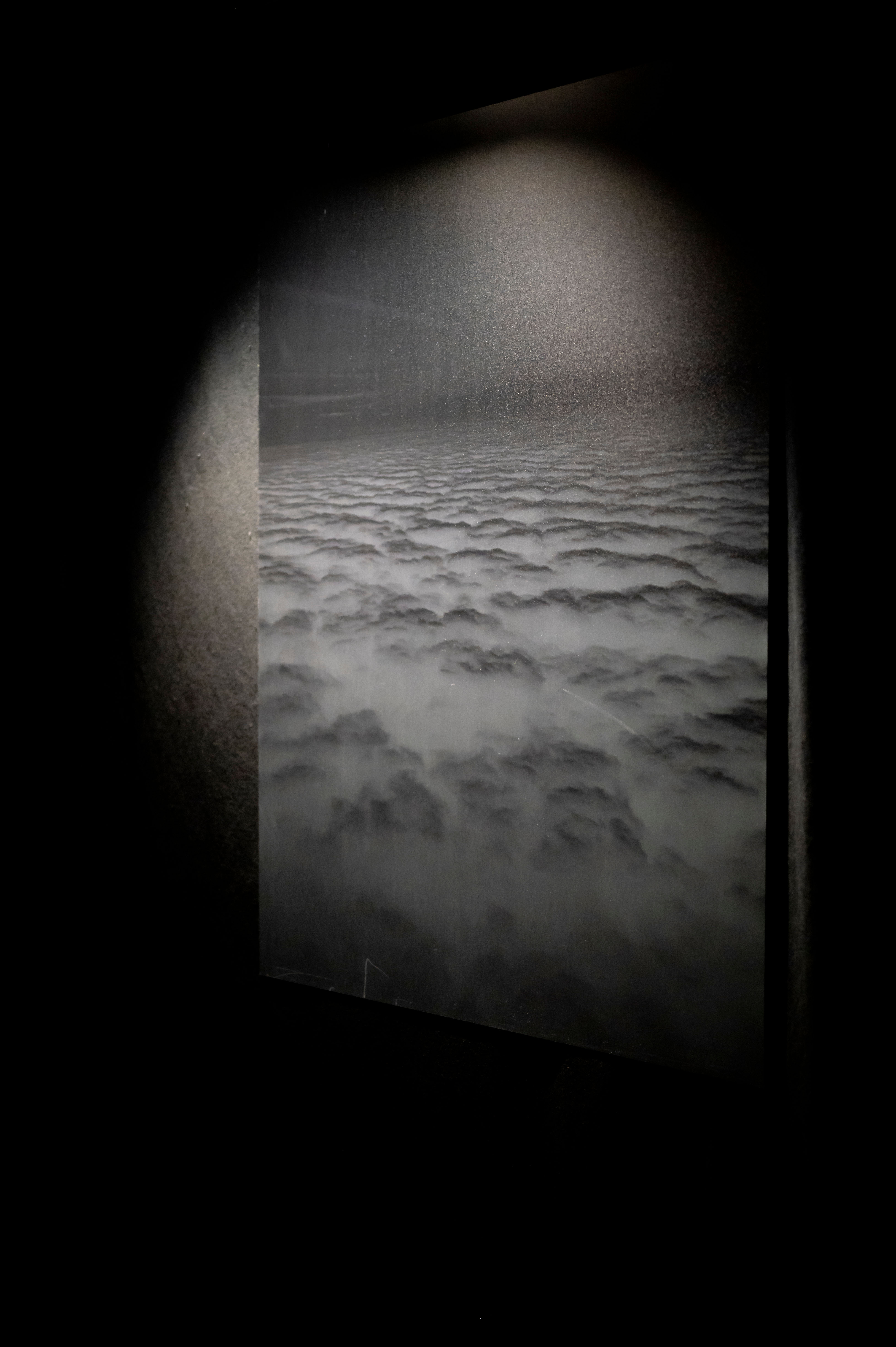
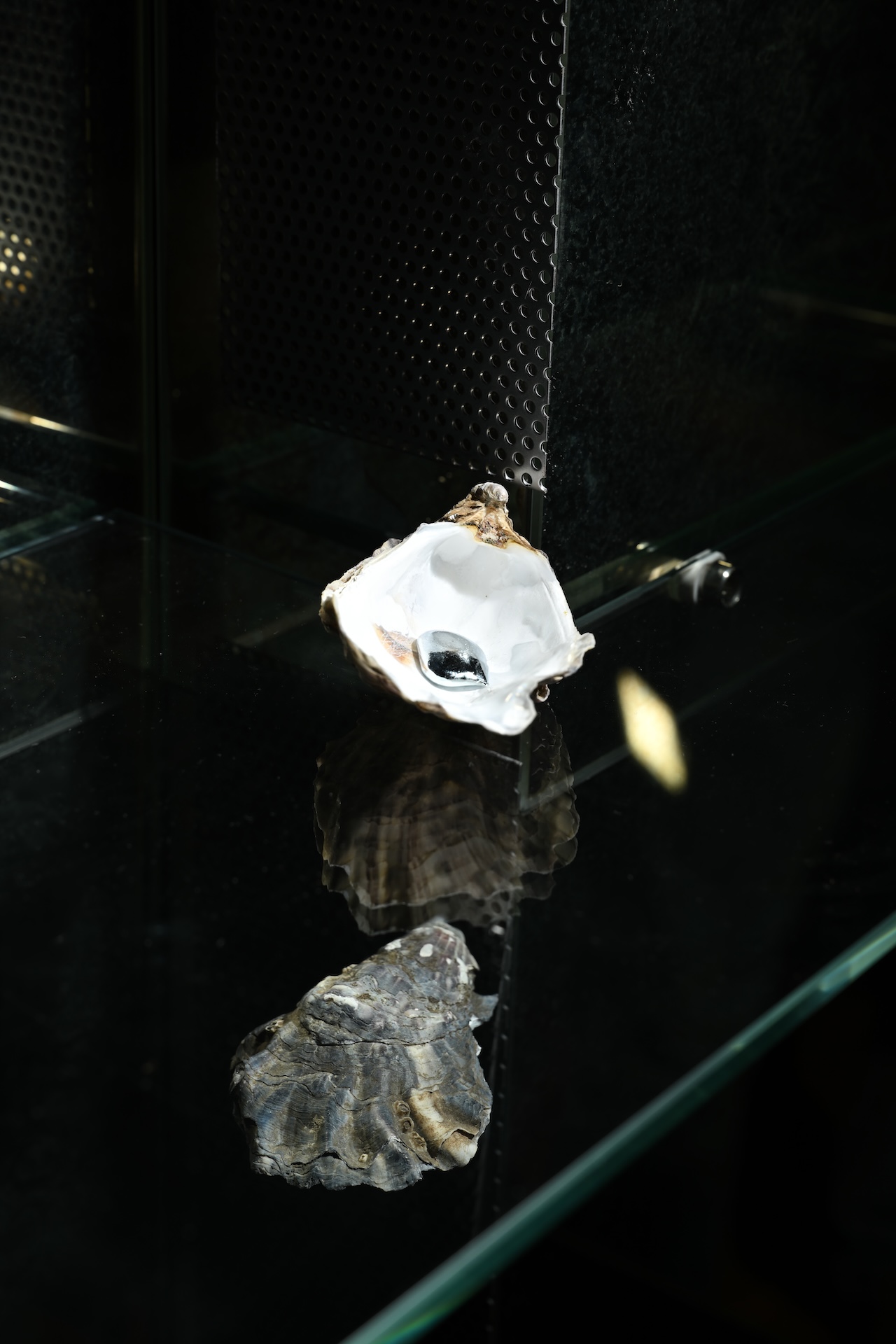
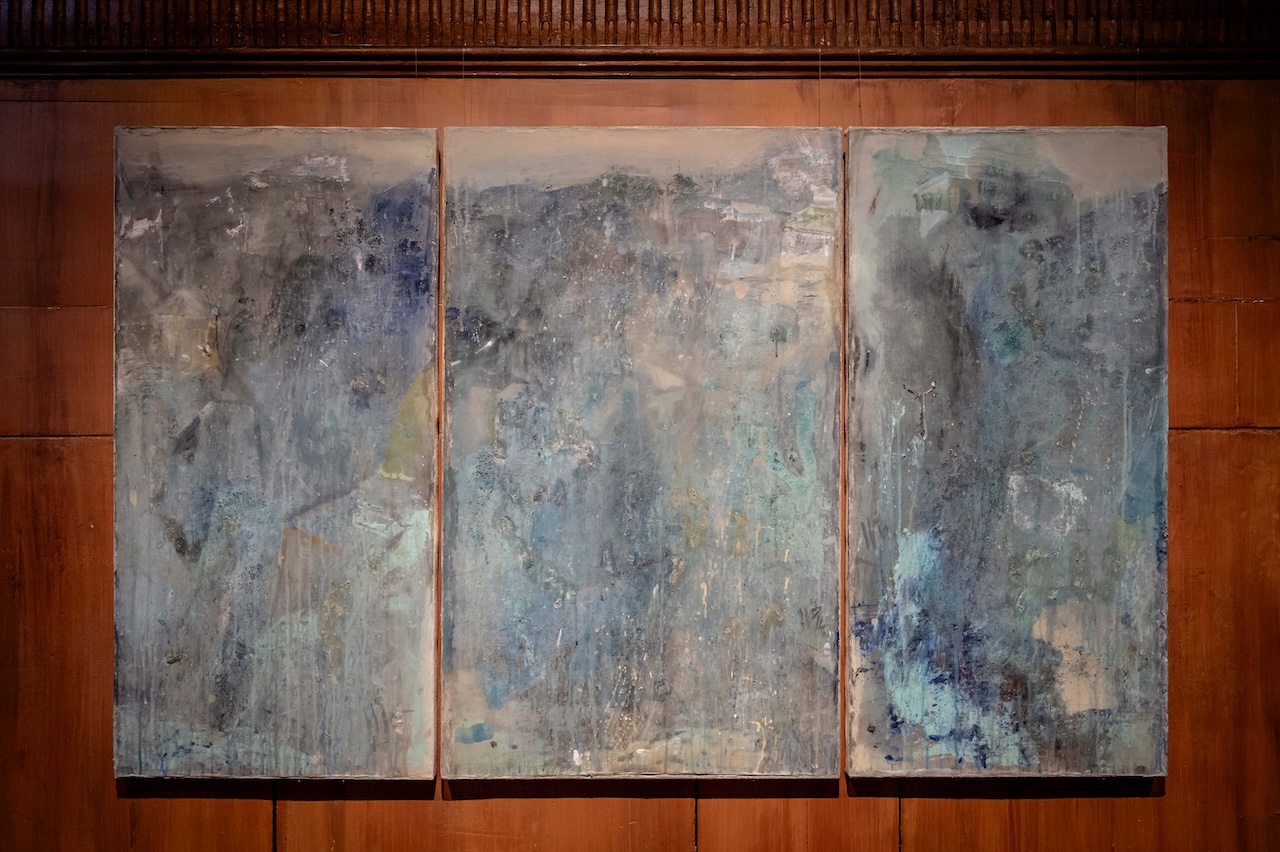
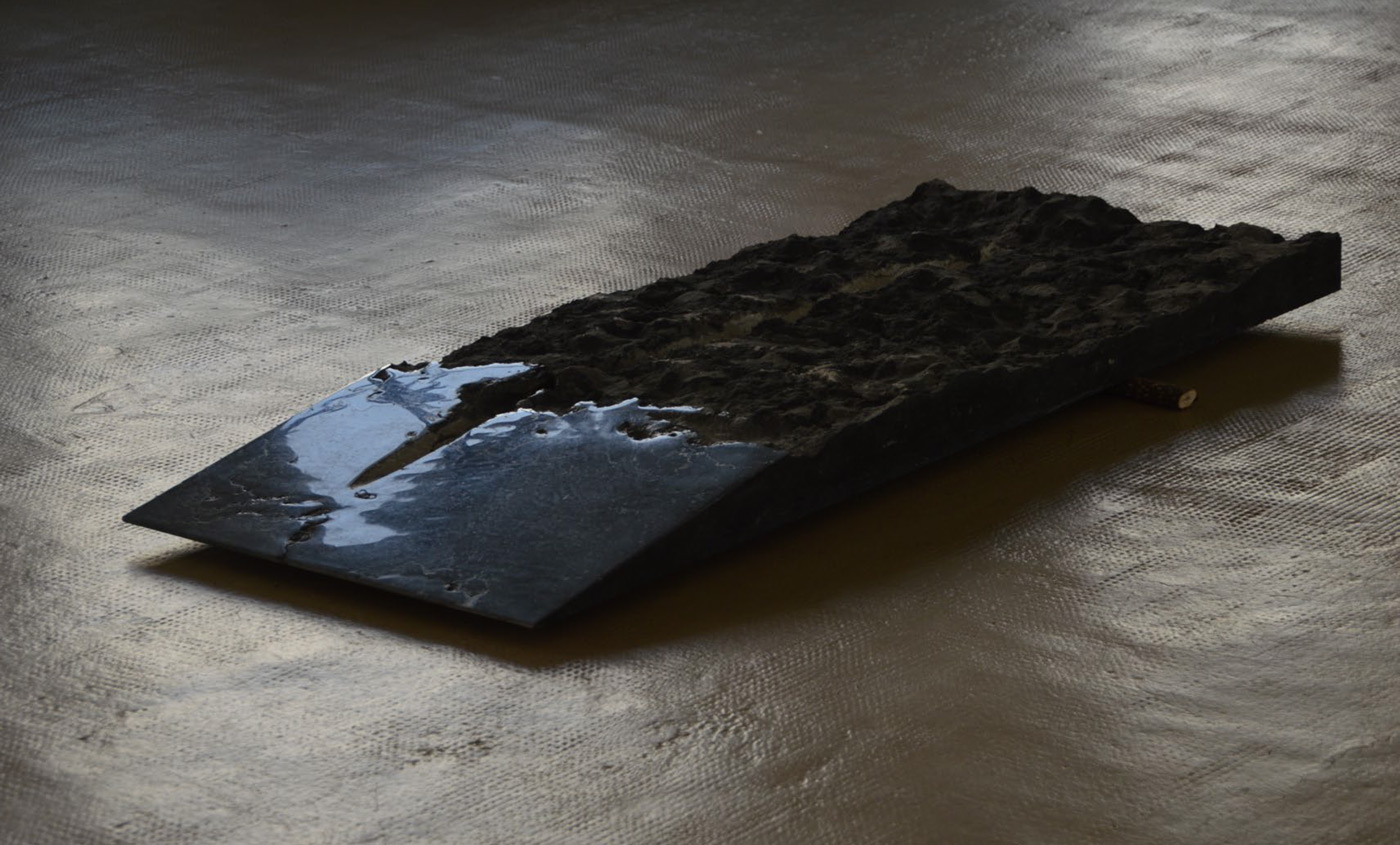
As a part of the 'Into the Mist' constellation of multimedia exhibitions co-curated with Elisabeth de Brabant
Marie-Luce Nadal, Leng Hong, Palmalisa Zantedeschi, Adrien Lagrange
Curated by Anna Shpilko and Elisabeth de Brabant, Venice
This show is a translocal exhibition cycle first conceived during the Venice Architecture Biennale. The title Glauque (from glaucus, Lat.) refers to an elusive color between green, blue, and grey—once used to describe the sea’s shifting depths. It carries with it a sense of tonal ambiguity and layered perception, melancholia, and depth—qualities echoed in the atmospheric, poetic, and sculptural gestures presented here. On the walls of Venice, algae, salt, and sediment trace a similar palette—marking the meeting of air and water, real and imagined, present and residual.
Set across three spaces of a restored 17th-century palazzo on the Zattere, Glauque (Into the Mist) brings together four artists whose practices attend upon the mystery of the waters and the various natures of the Venetian lagoon.
Master Leng Hong presents his new painting series Au Cœur de la Brume, unfolding a solo reflection on pictorial mist and suspended memory. Alongside, three artists—Marie-Luce Nadal, Palmalisa Zantedeschi, and Adrien Lagrange—respond to la brume, or mist, as a drifting echo of the sea, suspended above the canals, bearing both memory and dream sensations.
Mist—la brume—is perhaps Venice’s most elusive yet defining presence. It hovers between water and air, presence and disappearance. Composed of water vapor clinging to airborne particles, it becomes, in a way, an atmospheric archive: a speculative repository of time, matter, and memory. If water holds history, mist disperses it—suspended, shifting, and multiplied.
In the Studio, Marie-Luce Nadal explores the unstable bond between human agency and atmospheric phenomena. Descended from generations of cloud seeders, Nadal’s videos Marée Basse and Neophoscope stage an oscillation between submission and control. One documents the artist fencing the sea in an act of necessary defeat; the other constructs a sealed vessel where a self-made cloud hovers, contained yet unsettled.
In the Oyster Alcove, Adrien Lagrange stages an encounter between fragility and transformation. His site-specific installation Venus in Leo brings oyster shells and gallium—a metal that liquefies just above room temperature—into slow interaction. The result is a sculptural act of surrender, where organic erosion meets technological instability and form yields to elemental logic.
Palmalisa Zantedeschi’s marble and onyx sculptures, rather than carved, are revealed, the stones are approached with listening and restraint. Light animates the breath of the mineral, lifting their weight toward the atmosphere. Rooted in familial stone-carving traditions, her works soften the line between geology and gesture.